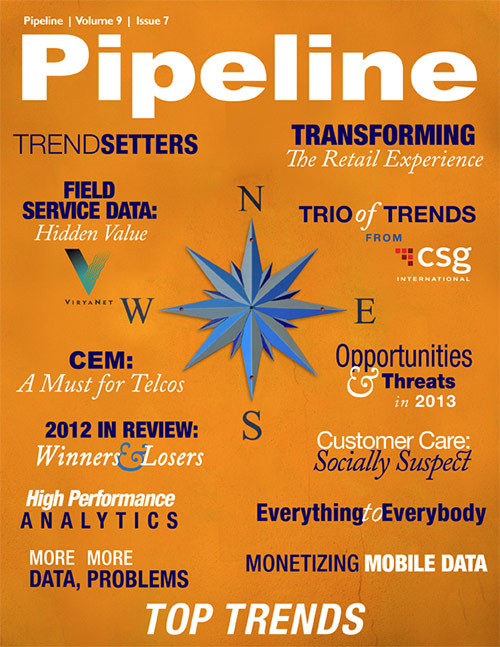Big Data or Big Impact? Get Smart About Your Field Service Data
Many communications service providers don’t have the capability to plan for the prep work in real time. Instead, these companies have policies that add extra days to the time frame for new installs in order to accommodate the work. But these policies put companies at a disadvantage in regards to customer service. If these companies were able to plan for both the appointment and the preparation work in real time, they could offer customers a shorter time-to-service initiation.
Data for process efficiency
If your goal is to increase resource utilization you need to know if your staff is working as much as possible. Much of this analysis is based on gathering information about each and every activity in the field. When the field service technician reports the “start” and “end” of every job and every trip (in some systems this reporting is recorded automatically), there’s a lot of information that can be analyzed regarding resource utilization.
The first type of analysis is “Do we have enough people?” which is similar to the time-to-service initiation example discussed earlier. After your analysis you may decide to add more workers, relocate existing workers or change policies such as overtime. In addition your analysis can answer the question “Do I have the right mix of skills?” If you train your workers to do more, your workforce is better equipped to accommodate the expected load with the relevant work types as well as the relevant skills to handle those work types.
Also, you can analyze if you’re using overtime efficiently. By analyzing how far in advance you plan for it, you can see if overtime was built into plans prepared a day in advance or at the last minute. If indeed it was added at the last minute, was it because of a broken business process? By conducting this type of analysis and understanding when overtime had to be approved and who is approving it, you can determine if the same job can be done without the need to approve expensive overtime hours.
When you’re building daily plans you should review the utilization expected at the beginning of the day versus the actual utilization at the end of the day. From this analysis you can discover if you have a planning issue or an execution issue. If it’s the former, ask yourself: if I increase resource utilization what’s the impact? You also must compare utilization against other objectives and then determine if workers complied with and executed the plan created for them. If compliance is an issue, find the root cause of why workers didn’t comply with the plan. Does lack of compliance mean something is wrong with the planning process itself? Or should compliance be handled as part of a change management process to ensure employees are more engaged in following the plan?
If your field-service technicians report the “start” and “end” of every job and every trip, this information is the data source for most of your analysis, no matter your business goal. Many communications service providers already collect this data but may not have the tools to analyze the information and answer specific questions:
- How did I perform in the past?
- How well did I plan?
- How can I improve my plan in the future?
With the right tools you can review your planning, analyze the plan itself (even before it’s executed) and determine if/how your planning policies or IT systems can be changed. Then you can assess your plan against the same historical data (e.g., forecast load, workforce profile) and apply what you’ve learned for your future plans.
Get smart with your data
As a service organization you need to define your goals, build your business processes and measure your performance against business objectives. You also need to develop various corrective actions, like how to handle field workers who are not performing as well as others, low-quality assignment decisions, problems in the workforce buildup, or problems with an internal business process. Measuring and monitoring the right factors is crucial to fine-tuning the performance of your organization and addressing your business objectives. Ongoing monitoring and analysis of your most significant KPIs can guide meaningful business decisions that lead to continuous improvement.



















